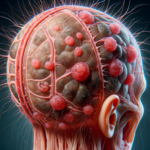Introduction to Glaucoma
Glaucoma is a group of eye conditions that damage the optic nerve, which is vital for good vision. This damage is often caused by abnormally high pressure in your eye. It is one of the leading causes of blindness for people over the age of 60, although it can occur at any age. Early detection and treatment are crucial in managing glaucoma effectively. Understanding the disease, its symptoms, and its impact on vision can empower individuals to take proactive steps in preserving their eyesight.
Understanding the Types of Glaucoma
There are several types of glaucoma, each with its own characteristics. The most common type is open-angle glaucoma, where the drainage angle formed by the cornea and iris remains open, but the trabecular meshwork is partially blocked, leading to gradual pressure increase. Angle-closure glaucoma, on the other hand, occurs when the iris bulges forward to narrow or block the drainage angle. Other forms include normal-tension glaucoma, where optic nerve damage occurs despite normal eye pressure, and congenital glaucoma, a rare condition present at birth.
Recognizing the type of glaucoma is essential for effective management. Each type requires a tailored approach, and understanding these differences can guide treatment decisions. Regular eye exams are crucial for early detection, especially for those with a family history of the disease.
Symptoms and Diagnosis
Glaucoma is often called the “silent thief of sight” because it typically has no symptoms in its early stages. As the disease progresses, symptoms may include patchy blind spots in peripheral or central vision, tunnel vision, severe headache, eye pain, nausea, blurred vision, and halos around lights. Due to the lack of early symptoms, regular comprehensive eye exams are vital for early detection.
Diagnosis involves several tests, including tonometry to measure intraocular pressure, visual field tests to check for areas of vision loss, and imaging tests of the optic nerve. Early diagnosis can significantly improve the prognosis and prevent further vision deterioration.
Treatment Options
Managing glaucoma focuses on lowering intraocular pressure to prevent further optic nerve damage. Treatment options include medications, laser treatment, and surgery. Medications, often in the form of eye drops, are usually the first line of treatment, aiming to reduce eye pressure by improving fluid drainage or decreasing fluid production.
Laser therapy can be an option if medications are insufficient. Procedures such as laser trabeculoplasty for open-angle glaucoma or laser iridotomy for angle-closure glaucoma can help improve fluid drainage. In more severe cases, surgical procedures like trabeculectomy or drainage implants may be necessary to create a new drainage path for the fluid.
Each treatment plan is personalized, considering the type and severity of glaucoma, the patient’s overall health, and their response to previous treatments. Regular follow-ups are essential to monitor the condition and adjust the treatment plan as needed.
Lifestyle and Home Remedies
While medical treatments are crucial, lifestyle changes can play a supportive role in managing glaucoma. Regular exercise can help reduce eye pressure, but it’s important to consult with a healthcare provider to determine safe activities. A healthy diet rich in fruits, vegetables, and omega-3 fatty acids supports overall eye health.
Protecting the eyes from injury, avoiding smoking, and managing other health conditions like diabetes and hypertension can also help in managing glaucoma. Stress management techniques such as yoga and meditation may contribute to overall well-being and indirectly support eye health.
By incorporating these lifestyle changes and adhering to prescribed treatments, individuals can take an active role in managing their glaucoma and maintaining their vision quality.
Conclusion
Managing glaucoma requires a comprehensive approach that combines medical treatment with lifestyle adjustments. Early detection through regular eye exams is crucial in preventing vision loss. By understanding the disease and its management options, individuals can take proactive steps to preserve their eyesight and enhance their quality of life. Regular communication with healthcare providers and adherence to treatment plans are key components of effective glaucoma management.








